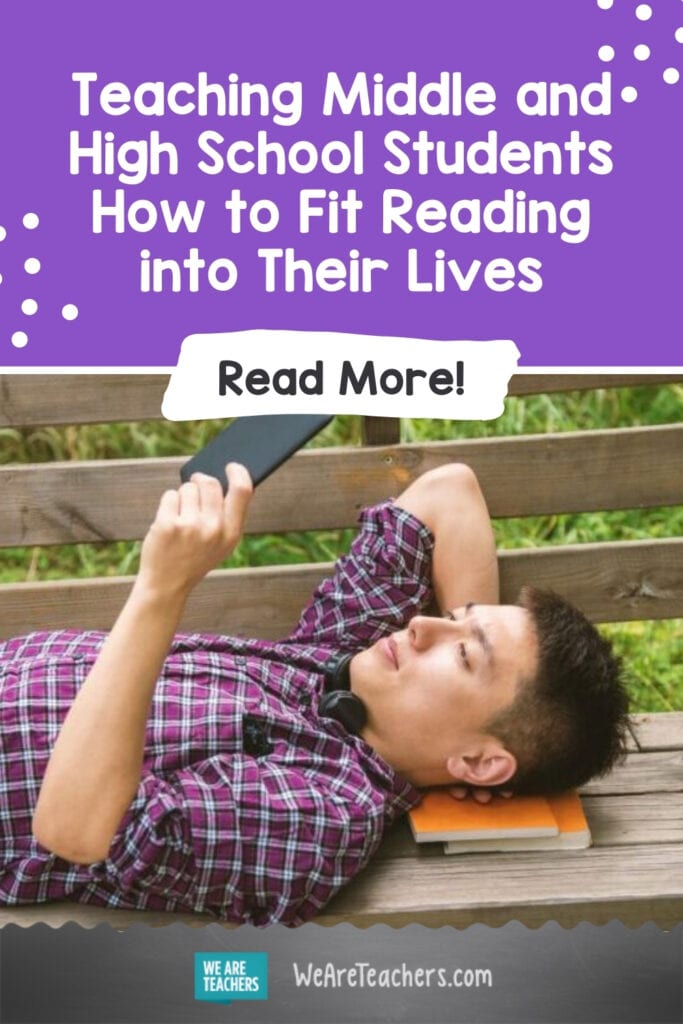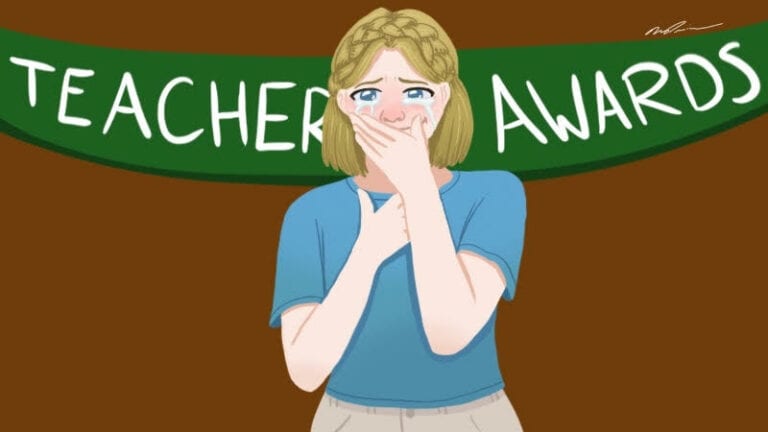Most elementary teachers place a high priority on carving out time for students to read independently. But, in many cases, by the time students get into middle and high school, that precious 10 to 15 minutes of reading time becomes rare. With a million distractions and demands on their time, how do we get middle and high school students simply reading?
We know that reading creates curiosity, hones focus, and reduces stress. James Baldwin said about reading: “You think your pain and your heartbreak are unprecedented in the history of the world, but then you read.”
The trouble is, many of us think of fitting in time to read as something we have to do. Something that takes a lot of time and not something we do for pleasure. But, even just a few minutes of reading every day (listening to audiobooks or even a podcast) connects us and helps to explain life.
Rethink the “classics”
Rachel Nichols, a 22-year veteran high school English teacher at High Tech High International in San Diego, California, says teachers need to rethink what they consider a classic. “In a world where typically those [authors] are dead white men. What kind of ‘classic’ are you teaching and what might you consider literature that’s worth reading in the world that we have today,” she says.
“There’s some rethinking teachers need to do right now. And the crucial part is, ‘what are you asking students to lay eyes on as a motivating factor?’ If it’s something that doesn’t relate to their lives or thinking or represent people they see and know, maybe that’s why they’re turned off to reading?”
[contextly_auto_sidebar]
Model your reading strategies
First off, make sure students see you reading. They’ll take their cues from you.
Share the strategies you use to choose a book. Tell your middle and high school students about the plot and the characters. You can even read an exciting passage. In the same way that adults love book clubs, you’re creating a similar interactive community in your classroom.
“Just to have them sit and relax for a few minutes with technology turned off is a gift in and of itself,” Nichols says.
Nichols believes we live in a world where slowing down isn’t rewarded. In fact, it’s the opposite, she says—particularly in education. “It’s the act of slowing down that people are afraid of,” she says.
Tell students about what you’re reading in your book club, what’s on your TBR list, and what you look for when you shop for a new book at the library or local bookstore.
Set reading goals
Not everyone will be motivated by this, but some will. Reading goals and challenges are one way to definitely get more books read. And some students may enjoy the competitive nature of this concept.
See if students want to make a list of books they want to finish by the end of the school year and keep themselves accountable. Or make a themed list and see if students can finish a set number of books within that theme.
Themes could include: “LGBTQ+ authors,” “books from around the globe,” or “reading all the books you own but have never read.”
Change your idea of reading time
Research finds that with as little as 10 minutes of reading per day, you can improve reading comprehension.
Author, teacher, and literacy expert Pernille Ripp says she starts every one of her 7th grade English classes with 10 minutes of independent reading. She calls it 10-minutes of “falling into a book.”
“When you teach just 45-minute classes, giving up 10 minutes can be seen as a major sacrifice, and yet, it never is; after all, reading time is one of the biggest gifts I can give all of my students. And offering them up 10 minutes to read the pages of a book they choose is the biggest investment I can make into their future reading lives. I give it gladly,” Ripp says.
Read out loud
Nichols reads aloud to her students. She says adults think this age group won’t be interested, and they’ll be bored. But if you’re enthusiastic and you pick content worth reading, they really love it, she says.
“I’m not a professional reader. But students report back that it slows them down. We can stop and talk about something. And they’re interested enough that they want to continue the reading,” Nichols says. She adds: “It’s exactly like when you’re in elementary school and your teacher would read that chapter book and they’d stop. And you’d be like, ‘Oh my God, what happens next?’ There’s no difference in a teenager except that we treat them differently because of their age.”
Rethink reading
If we think of just words on a page, that’s simply not the modern-day version of reading. “You have to read math text. You have to read social situations. Reading is a place you get to go in your mind,” Nichols says.
If you are taking in new information, it makes you think differently. So, even taking the time to hear human voice, meaning a podcast or audiobook, makes you think.
K. Healy says she plays a video for her classes and then starts a discussion about how the video relates to the book version of the movie.
You love reading because it feels great and helps you process things. Kids should get to feel that too. Tell your students why we love reading and what it means to you. Share with them that sometimes you listen to audiobooks or podcasts, and that’s okay. Remove the shame from what you read and how you read it, and impart to them the importance of simply traveling to a new world that reading takes us.
For a comprehensive list of the best books for the classroom by grade and topic, click here.
If you’d like to learn more about how to get your middle and high school students reading, sign-up for our newsletter.


